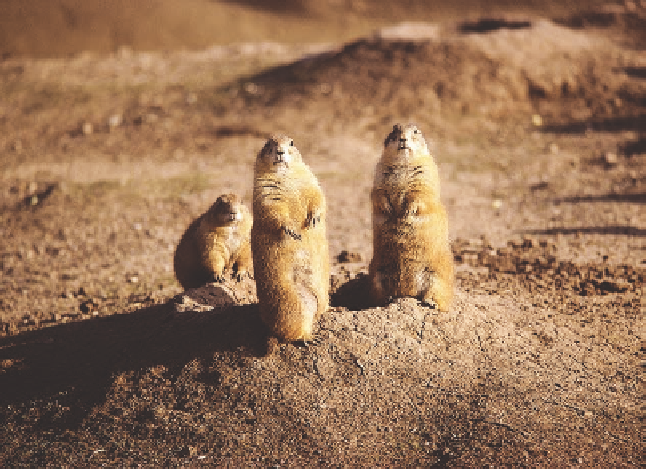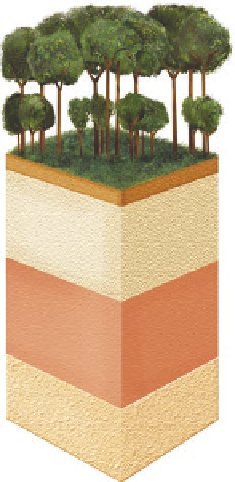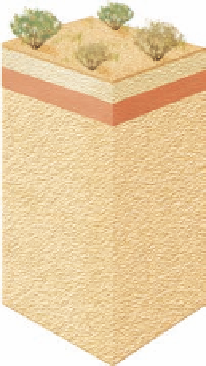Geoscience Reference
In-Depth Information
Eluviation
Illuviation
Eluviation
Zone of
Eluviation
Illuviation
Zone of
Illuviation
Parent
material
Parent
material
Parent
material
(a) Humid climate
(b) Semi-arid climate
(c) Arid climate
Figure 11.10 Eluviation and illuviation in three climate regimes.
More eluviation takes place in (a) humid climates
than in (b) semi-arid and (c) arid climates. In addition, the zone of illuviation (where minerals precipitate from solution)
is deeper and thicker in more humid climates. Typically, this zone is progressively thinner and less deep as the climate
becomes increasingly dry.
which makes it easier for plants to grow. Earthworms are
important within the system because they recycle soil ele-
ments through consumption and waste production. Anoth-
er important biological component is the huge number of
microorganisms, such as algae, fungi, and bacteria, that
live within the soil. The primary function of these micro-
organisms is to assist with the decomposition of organic
matter into humus.
(a)
(b)
Figure 11.11 Soil bioturbation.
(a) Prairie dogs in the Great Plains constantly burrow in the soil, which recycles nutrients and keeps soil
loose and well aerated. (b) Termite mounds in central Brazil are composed of earth brought to the surface by the termites. This process
mixes the soil.

























